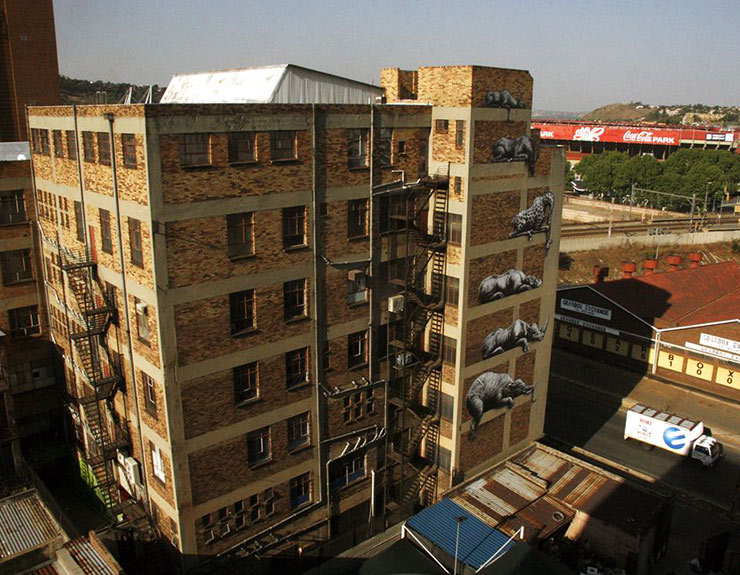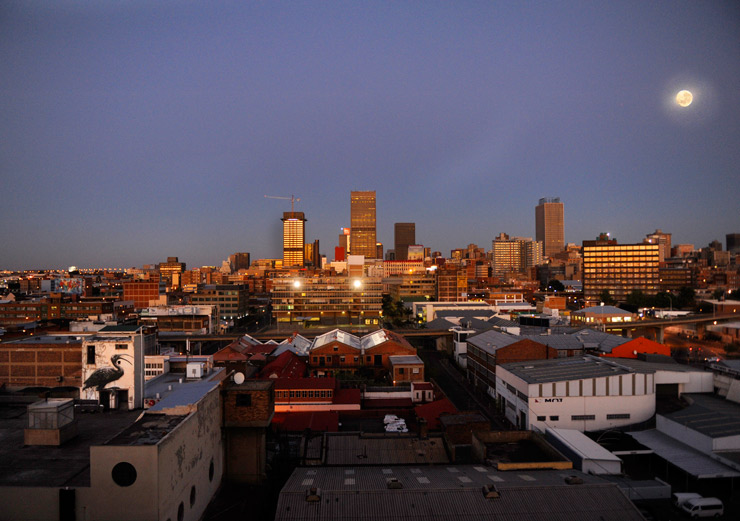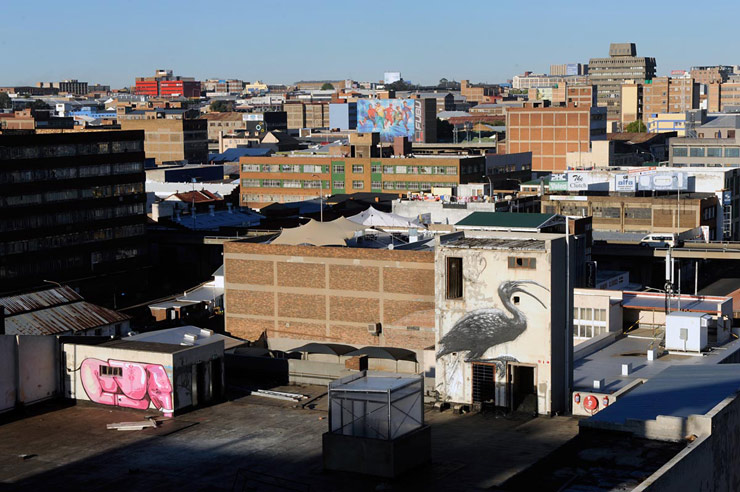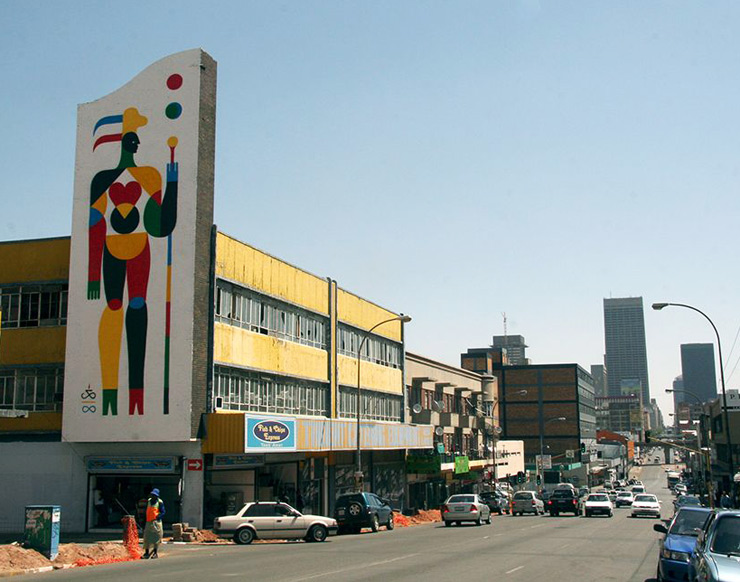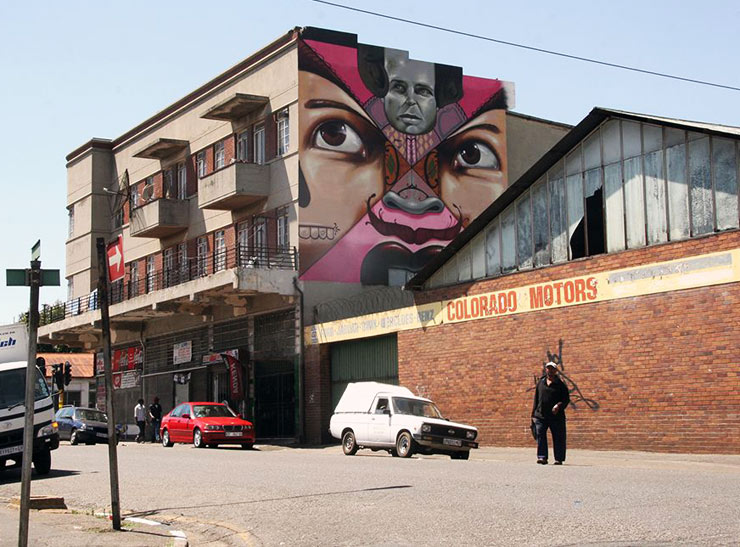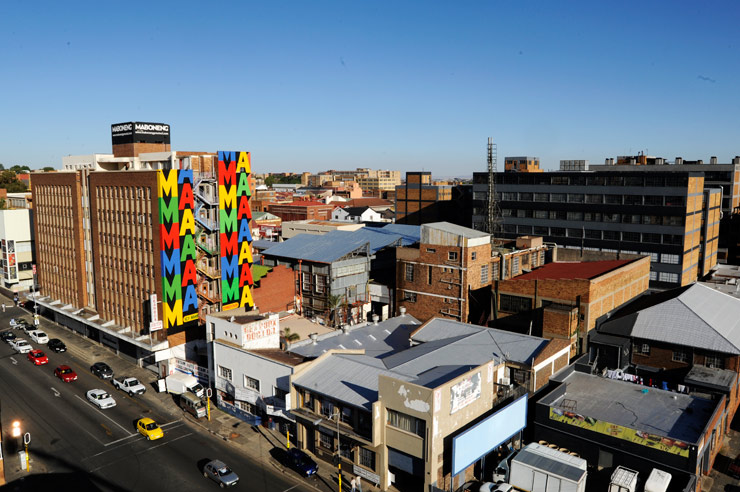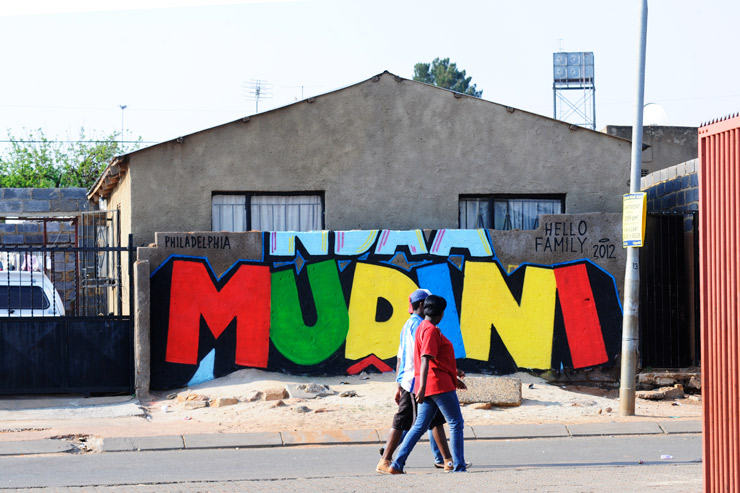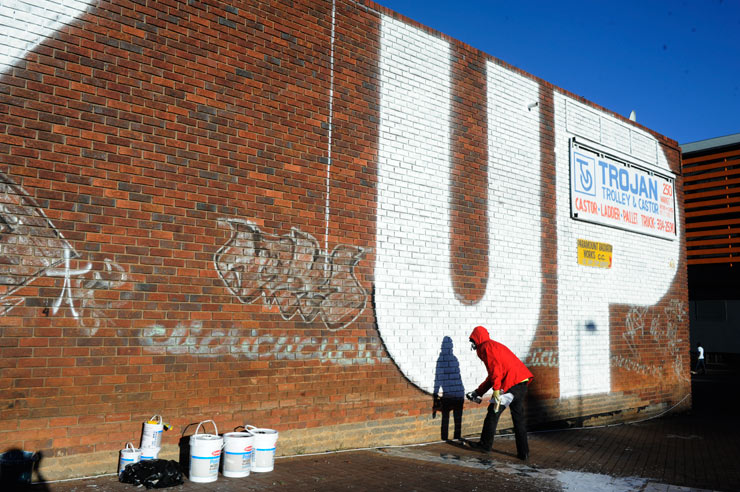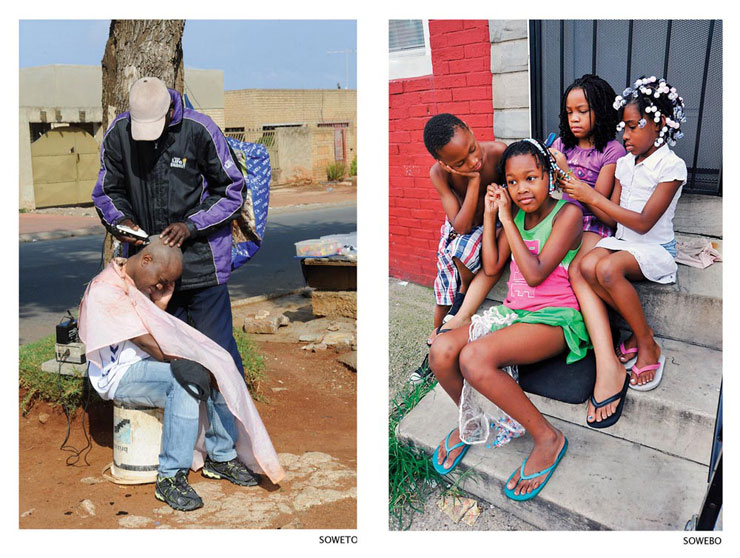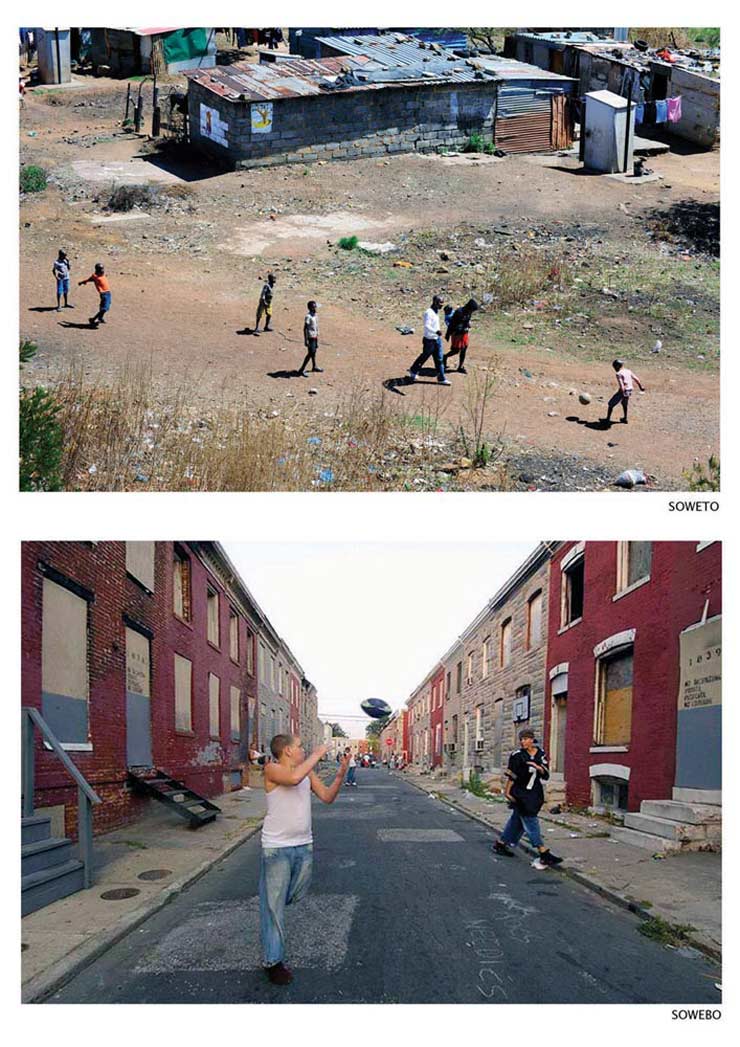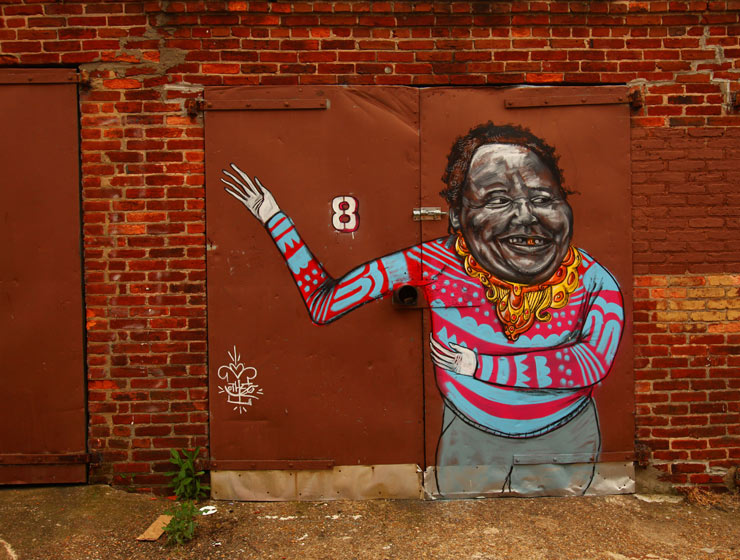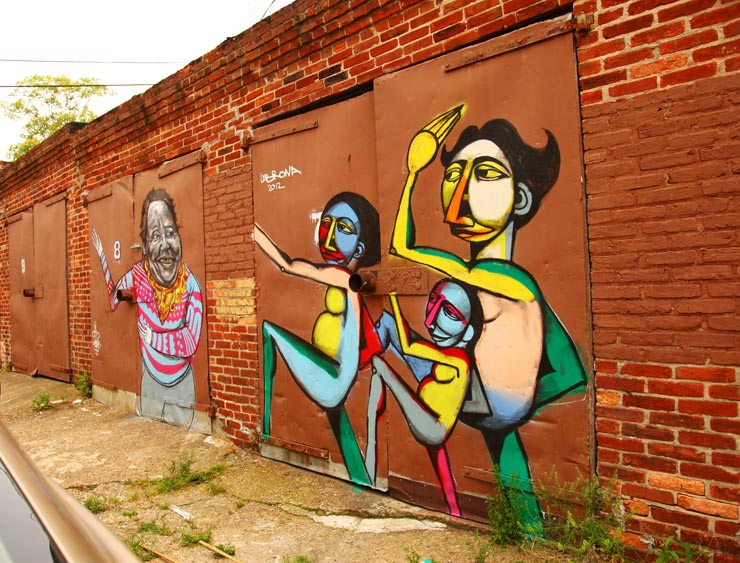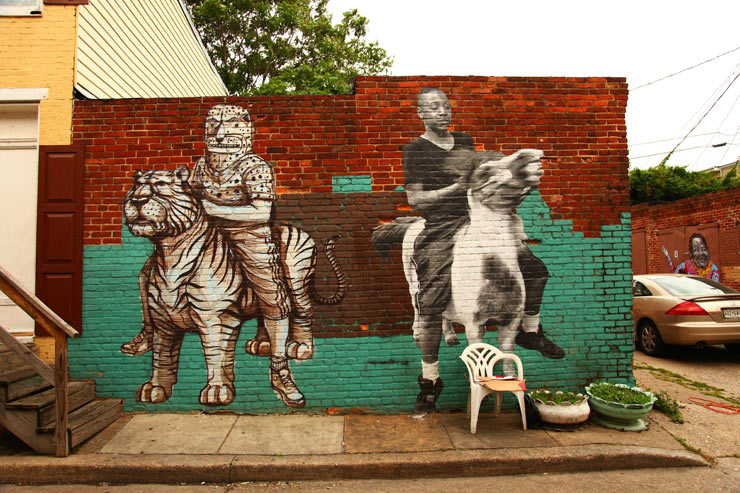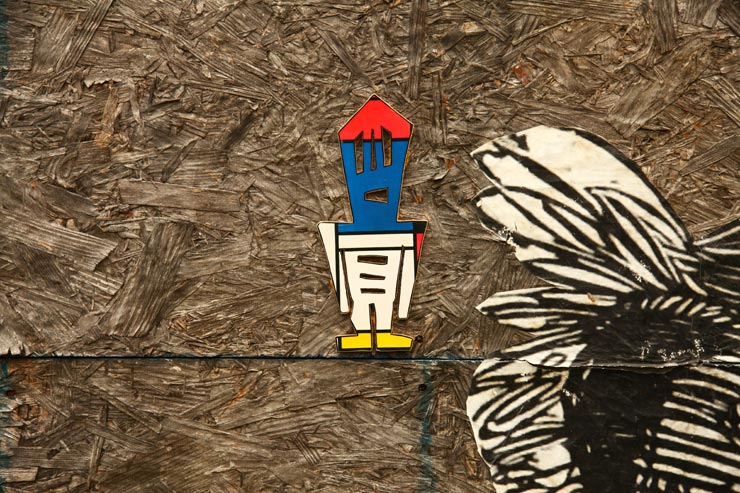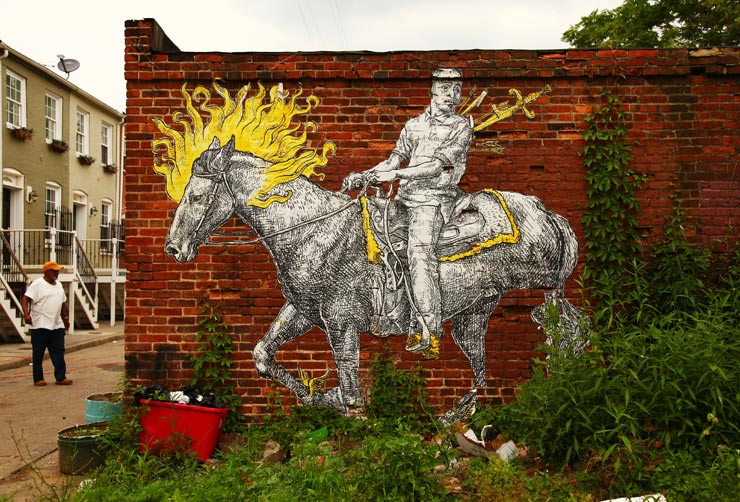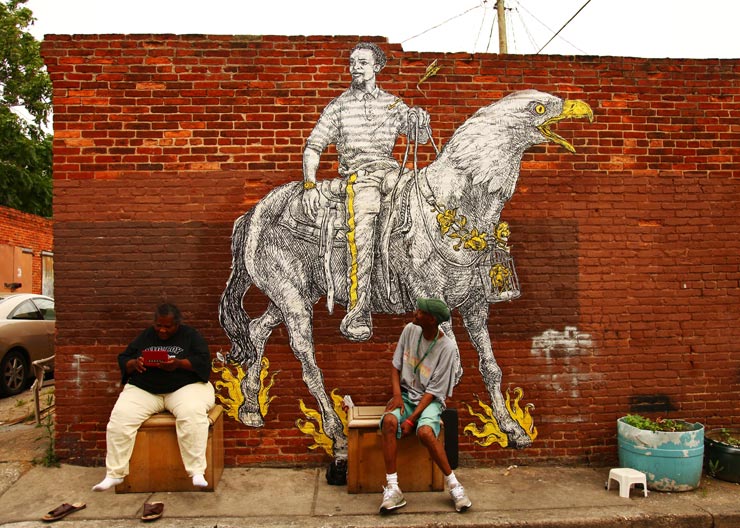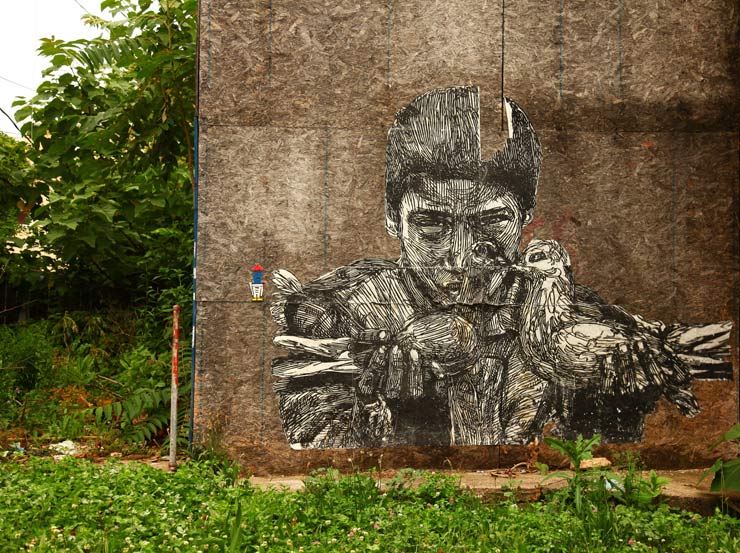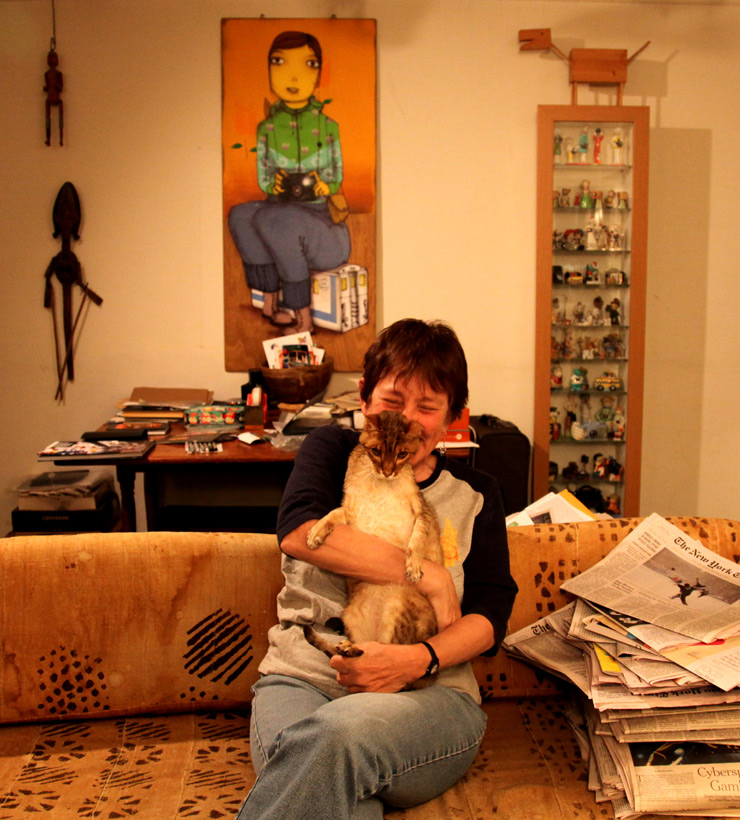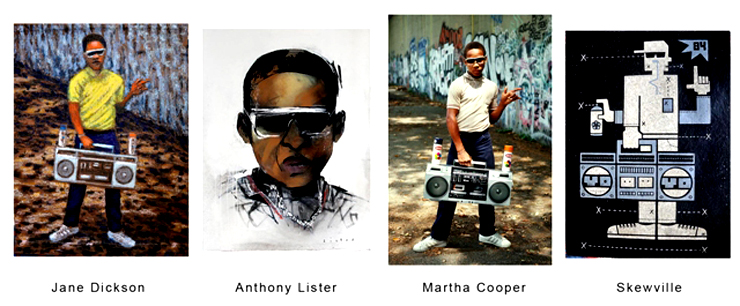Today we welcome Monica Compana to BSA to share with you her experiences during a recent Street Art/community program in Johannesburg, South Africa that took place in September. As one of the principal originators of Atlanta’s Living Walls festival, Campana brings a wizened eye to the events as they unfolded, and presents here what she observed and experienced. Special thanks to Martha Cooper, who shares with BSA images that display her personal vision of Joburg and some layouts from her new zine “Soweto/Sowebo”.
Considered one of the wealthiest cities in Africa, Johannesburg is not only rich in gold and diamonds, but also rich in arts and culture. In the month of September, Johannesburg hosted the largest mural project in the city and possibly even the continent.
I Art Joburg brought the artists Espo, ROA, Cameron Platter, Falko, Remed and graffiti photographer legend Martha Cooper to South Africa to create art in the streets, start a dialogue about street art in the city and to document a month where artists worked together alongside a commercial production team and community members to bring color to Joburg and Soweto.
ROA (photo © Martha Cooper)
“Color creates energy, energy creates inspiration and inspiration creates change. It is our responsibility to inspire ourselves to inspire others to inspire the change. Art is the remedy for this,” says Ricky Lee Gordon, organizer and curator of I Art Joburg.
Gordon’s carefully selected list of renowned street artists not only managed to put the festival amongst one of the best ones of the year, but also it created a chemistry between artists and community. With 6 murals installed around the Maboneng Precinct it hosted a night of lectures and the screening of Espo’s “Love Letters to You” documentary. The precinct is also referred to as “a place of light”, as it is a hub for young creatives and artists, and it also hosted a gallery exhibit by the participating artists.
ROA (photo © Monica Campana
To inspire kids from a local school, organizers created a workshop and a mural with kids in Soweto, a name synonymous in the northern hemisphere with the historic anti-apartheid black resistance movement that inspired so many artists in the 70s-80s around the world. The name Soweto has an auditory similarity to the neighborhood of Sowebo in Baltimore, which photographer Martha Cooper has been documenting as a personal passion for nearly a decade.
Already in Joburg to document all of the murals and exhibit her own work, she took the experience and project to a whole new level with the development of her zine titled: “Soweto/Sowebo.” Martha owns a house in South West Baltimore, also known as Sowebo, an area so affected by urban decay that it is often compared to Soweto in South Africa. Needless to say, when she arrived in Soweto she immediately saw the similarities and she decided to create a zine honoring the richness of both cultures. It was fascinating to see through her work how these two places, so far away from each other geographically in two completely different continents, could pass as one and the same.
ROA (photo © Martha Cooper)
Soweto/ Sowebo was not the only example of this wonderful dialogue. Each artist tried to leave something to the city of Joburg that would not only last for a long time visually, but something that could continue to spark some kind of dialogue. During my stay in Joburg I was able to spend quite a bit of time with ROA and Martha Cooper. It was amazing to see how their easily they interacted with the people on the streets of the city and even though they had been there for only about a week by the time that I arrived, Martha and ROA had already made dear friends in the neighborhood.
ROA and Falko (photo © Martha Cooper)
On the subject of friends we made: Bongani Mathebula, my Joburg tour guide, is the one that stole my heart. Seeing the city through the eyes of a local 25 year old artist was very inspirational. He told me that projects like I Art Joburg are what the city of Johannesburg needs – an outsider’s view and conversation starter to inspire the local community.
“Artists are like heroes. Art is crazy, people need to let that happen. More art, more crazy communication and growth,” says Bongani.
I hope to see more mural festivals happen in Joburg and Soweto. I know the artists who were part of the project were left wanting more. So, who knows? Maybe this really is just the start to a much bigger conversation in Joburg! Fingers crossed!
Remed (photo © Monica Campana)
Falko (photo © Monica Campana)
Espo (photo © Martha Cooper)
Espo (photo © Martha Cooper)
Espo (photo © Martha Cooper)
Espo (photo © Martha Cooper)
Martha Cooper’s “Soweto/Sowebo Zine” (photo © Martha Cooper)
Martha Cooper’s “Soweto/Sowebo Zine” (photo © Martha Cooper)
Martha Cooper’s “Soweto/Sowebo Zine” (photo © Martha Cooper)
<<>>><><<>BSA<<>>><<<>><><BSA<<>>><><<>BSA<<>>><<<>><><BSA
Please note: All content including images and text are © BrooklynStreetArt.com, unless otherwise noted. We like sharing BSA content for non-commercial purposes as long as you credit the photographer(s) and BSA, include a link to the original article URL and do not remove the photographer’s name from the .jpg file. Otherwise, please refrain from re-posting. Thanks!
<<>>><><<>BSA<<>>><<<>><><BSA<<>>><><<>BSA<<>>><<<>><><BSA
 BROOKLYN STREET ART LOVES YOU MORE EVERY DAY
BROOKLYN STREET ART LOVES YOU MORE EVERY DAY
